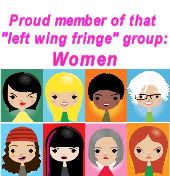 As the Occupy movement rolls on, it must deal with those who come not so much to share in the communal building of a new form of alternative resistance to the ills of our financial and governmental system, but for shelter and food. Mixing in with determined occupiers are the itinerants and homeless, those for whom there are few alternatives. You read about these people in the right-wing press. They are the ones singled out of the Occupy locations who are ridiculed most by pundits, lawyers and Wall Street types.
As the Occupy movement rolls on, it must deal with those who come not so much to share in the communal building of a new form of alternative resistance to the ills of our financial and governmental system, but for shelter and food. Mixing in with determined occupiers are the itinerants and homeless, those for whom there are few alternatives. You read about these people in the right-wing press. They are the ones singled out of the Occupy locations who are ridiculed most by pundits, lawyers and Wall Street types.
Dealing with itinerants is a tricky issue but it’s a no brainer. They are not just part of the movement; they are the victims of the current status quo who need the most help. Because of the backlash in the press against this most unfortunate of groups, some in the Occupy movement have complained about the money and effort it takes to feed and care for the less fortunate who have adopted the Occupy services.
Not Occupy Montreal and for that matter, most Occupy locations. Not only are the less fortunate welcomed and cared for, they are an integral part of the movement. But they also require special treatment that has stretched the limits of the Occupy organizers.
MONTREAL — As a leaderless and barrier-free movement, Occupy Montreal is open to the city’s homeless, some of whom suffer from mental troubles.
This has challenged volunteers at the encampment, who must often contend with aggressive or anti-social behaviour from passing itinerants.
“Sometimes they can get out of control,” said Eric Bouthillette, an occupier who volunteers as a “mediator,” who intervenes when things get ugly. First, he tries diplomacy. If that doesn’t work, he calls the cops.
“We just don’t know how to deal with them. We don’t have the tools. There are no social workers here,” he said.
For the occupiers, it’s important that the camp remains peaceful so the police don’t have a reason to expel them and news cameras don’t depict it as another violent protest. For this reason, organizers formed a mediation committee to deal with troublemakers swiftly.
His days working at the psychiatric clinic of the Montreal General Hospital gave Bouthillette a few tips. “You have to come with a respectful approach. Your tone has to be low and peaceful, to show them you’re not there to judge them. But if they don’t co-operate, we have to call the police.”
I walk through the Vancouver Art Gallery lot every day either on the way to work and back or attending the various sessions and marches. I’ve seen the crowds slowly change from all ages to a more defined group of younger people, some of whom I recognize as ‘occupiers’ of the Art Gallery area before Occupy was born. It used to tick me off a little that these are the people who are now most visible, most in the news, most identified with the movement, despite their sometimes peripheral involvement.
But then I think of what the movement stands for or will stand for when it develops a charter or concrete (or as concrete as possible) list of goals and actions. That list includes indigents and those most in need. So, kudos not just to the Occupy movements for including the homeless and needy, especially Occupy Montreal, but also the Vancouver Sun for (mostly) providing some of the most reasonable coverage of the movement.
Cross posted at Let Freedom Rain




![[small-web-version_harperfree_poster.jpg]](https://1.bp.blogspot.com/_WGczmWu7Wwc/SdCJyy2LN1I/AAAAAAAABWE/ABYCkbJaKaQ/s1600/small-web-version_harperfree_poster.jpg)



I quite like this perspective of considering homeless that tag along to the movement as an integral part of the movement because they are the biggest victims of the issues raised is really important. I keep hearing people and media describing the homeless in the movement as a way to bash the movement and imply that it is just becoming some big homeless shelter or similar nonsense.